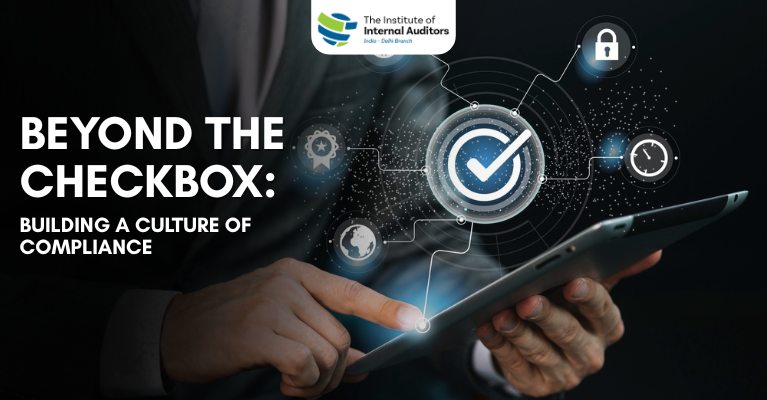Organizations are under more and more pressure to comply with intricate compliance standards in the quickly changing regulatory environment of today. But frequently, compliance is boiled down to a simple checklist—a set of items must be completed in order to avoid fines. Despite its apparent effectiveness, this strategy ignores the more fundamental requirement for a compliance culture that ingrains moral conduct and legal compliance into the very fabric of an organization’s activities. Creating such a culture promotes trust, improves reputation, and propels long-term success in addition to meeting the bare basic needs. This essay examines the value of fostering a compliance culture, important tactics for doing so, and the advantages it offers businesses.
The Limitations of Checkbox Compliance
The technique of fulfilling regulatory obligations through flimsy adherence—filling out forms, attending required training, or putting policies into effect without a sincere dedication to their goals—is known as “checkbox compliance.” Although this strategy could meet short-term regulatory requirements, it frequently exposes firms to dangers. In contrast to companies with integrated compliance cultures, 65% of companies using a checklist approach to compliance reported more ethical transgressions, per a 2020 Deloitte survey. Such mistakes may result in financial penalties, harm to one’s reputation, and a decline in shareholder trust.
Employees are not genuinely engaged by the checkbox mentality. Employee disengagement can result in inconsistent adherence and a higher likelihood of violations when compliance is perceived as a burden rather than a shared value. On the other hand, a culture of compliance ensures that all staff members comprehend and accept their responsibility for upholding integrity by integrating moral decision-making into daily operations.

Key Strategies for Building a Culture of Compliance
- Leadership Commitment: The top is where a culture of compliance begins. In both words and deeds, leadership must provide an example of moral conduct and show a dedication to compliance. Organizations with excellent ethical leadership are 67% less likely to encounter compliance infractions, according to the Ethics & Compliance Initiative (ECI) (ECI, 2021). Leaders should hold themselves to the same standards as their teams, emphasize the value of compliance, and provide resources to support it. Leadership’s commitment to moral behavior, for instance, can be reaffirmed through frequent town hall meetings or open reporting procedures.
- Employee Engagement and Training: A legal or compliance department alone cannot handle compliance; the entire organization must be involved. Making compliance relatable and useful can be achieved by including staff members in interactive, scenario-based training. Organizations using customized training programs experienced a 40% boost in employee compliance awareness when compared to those using generic training, according to a 2022 PwC study (PwC, 2022). Emphasizing real-world applications in training can help staff members identify and proactively resolve ethical quandaries.
- Clear Policies and Communication: Clear, accessible policies are the backbone of a compliance culture. Organizations should ensure that policies are written in plain language, regularly updated, and communicated effectively. For instance, companies like Google have implemented internal compliance portals that provide employees with easy access to guidelines and resources, fostering transparency and accountability (Google, 2023). Regular communication, such as newsletters or updates, can reinforce the importance of compliance and keep it top of mind.
- Incentivizing Ethical Behavior: Its worth is reinforced when ethical behavior and compliance are rewarded. Employers might provide appreciation programs for staff members who demonstrate ethical behavior or incorporate compliance indicators into performance reviews. Companies who implemented incentive-based compliance systems saw a decrease in compliance infractions over a five-year period, according to a Gartner analysis (Gartner). Employees who receive positive reinforcement are more likely to see compliance as an essential component of their job than as an outside mandate.
- Continuous Monitoring and Feedback: A culture of compliance necessitates constant assessment and modification. Strong monitoring systems should be put in place by organizations to keep tabs on compliance indicators and spot possible threats. Whistleblower channels, employee surveys, and routine audits all offer insightful input that helps businesses proactively address problems. For instance, after its implementation, IBM’s compliance program’s anonymous reporting tools have raised employee trust and reporting rates by 30% (IBM, 2022).
Benefits of a Compliance Culture
A robust compliance culture has several advantages. It lowers the chance of regulatory infractions and the fines that come with them, to start. Companies with proactive compliance cultures had 50% fewer enforcement actions than those with reactive methods, according to a report by the U.S. Securities and Exchange Commission (SEC) (SEC, 2023). Second, it improves the organization’s reputation, drawing in clients, financiers, and talent that respects moral behavior. Third, it increases employee engagement and trust, which boosts retention and productivity. Lastly, a compliance culture ensures long-term resilience by putting firms in a position to quickly adjust to regulatory changes.

Conclusion
Organizations must fundamentally change their perspective on regulatory adherence in order to get beyond checkbox compliance. Organizations can make ethical behavior ingrained in their DNA by cultivating a culture of compliance through leadership commitment, staff participation, explicit regulations, incentives, and ongoing monitoring. This strategy not only reduces risks but also fosters reputation, trust, and long-term growth. A culture of compliance is now a strategic need rather than an option in a time when stakeholders want openness and honesty.
About the author:

Vinod Krishnan Panicker, is a seasoned professional with over 30 years of experience in Internal Audit, Compliance Audit, Risk Management, Internal Control and management of Accounts & Finance function. He is currently an Associate Director with SS Kothari Mehta & Co, with previous stints with DS group, Unitech, Indiabulls Power Ltd etc. He has worked with various companies across industries in the Manufacturing, FMCG Automobile, Hotels, Jewellery, Infrastructure & Real Estate, Hospitals, Pharmaceutical & Oil and Gas sector.
References
- https://www.deloitte.com/au/en/services/audit-assurance/perspectives/culture-beyond-compliance.html
- https://docket.acc.com/business-ethics-eci-2021-global-business-ethics-report-reveals-progress-and-reason-concern
- https://www.pwc.com/gx/en/global-annual-review/2022/PwC_Global_Annual_Review_2022.pdf
- https://transparencyreport.google.com/
- https://www.gartner.com/en/legal-compliance/topics/compliance-program
- https://www.responsibilityreports.com/HostedData/ResponsibilityReportArchive/i/NYSE_IBM_2022.pdf
- https://www.sec.gov/newsroom/press-releases/2023-234
